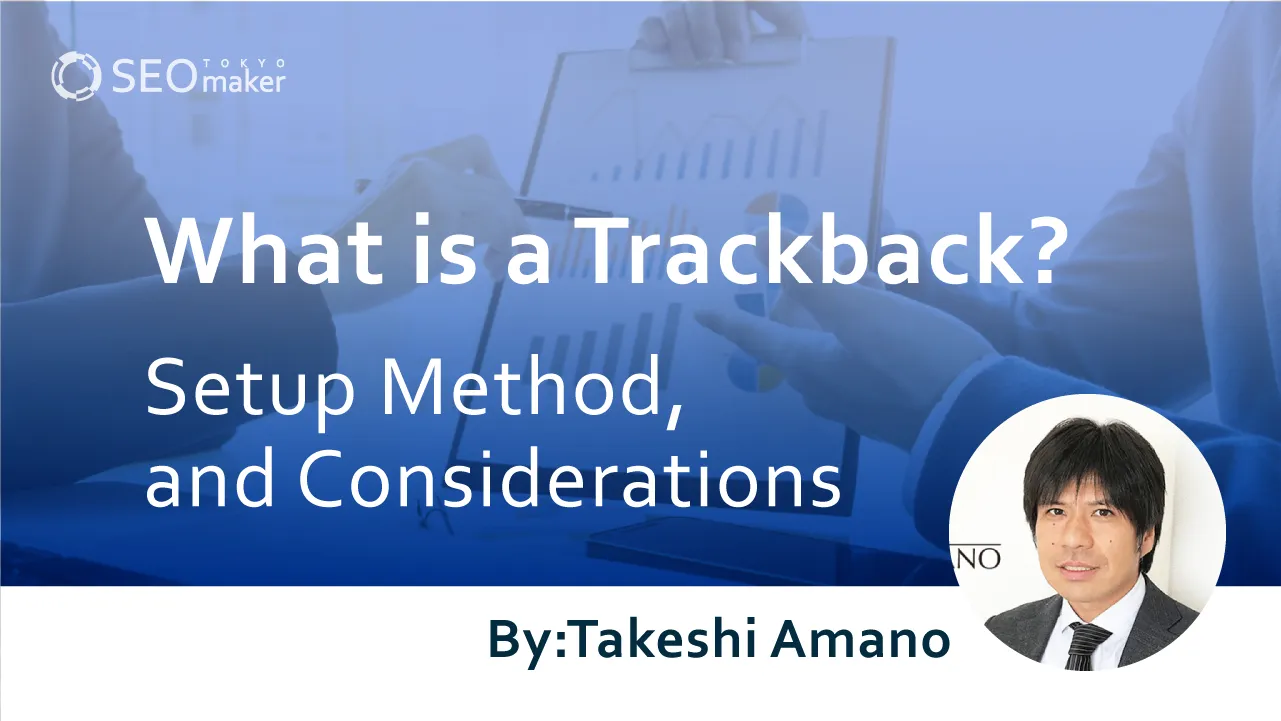What is a Trackback? Setup Method, and Considerations
contents

If you’re involved in the operation of web media or blogs, you’ve likely heard the term trackback at least once. A trackback is a feature that automatically sends a notification to an external site whose content you’ve cited in your own site.
While it offers the benefit of easily acquiring backlinks, there are also risks of being deemed as spam, necessitating attention to several points.
In this article, we’ll clearly explain the mechanism and setup method of trackbacks, along with points of caution. Use this as a reference in managing your web media.
Trackback Definition and Mechanism
Trackbacks are primarily used in blogging. When you cite or refer to content from an external blog within your web media, you can automatically notify the source blog.
Typically, when citing an external blog, you’ll place a link in your web media to indicate the source. Unless you notify them directly via email or comments, the source blog won’t know about your web media’s URL.
However, with trackbacks, you can inform the source blog’s operator about where their content was cited or referred to. Trackbacks serve to visualize the relationship between blogs.
The specific mechanism is as follows
- Send a notification to the source blog.
- The source blog receives the notification.
- Your web media’s URL is displayed on the source blog.
This creates a link between the source blog and your web media.
Normally, when you cite an external blog, you only place a link to the source in your web media. But using trackbacks, your web media’s URL will be displayed on the source blog.
Not only does the source blog receive a notification, but a link to your web media is also established. Therefore, trackbacks are considered a means of acquiring links to your web media.
Setting up Trackbacks
The method of using trackbacks varies depending on the tool, but here we’ll explain the setup method for WordPress, a popular CMS.
Open the post editing screen of the article you want to use trackback for, and follow the steps below. This is not the post list screen but the screen for editing individual posts.
First, click on the Screen Options tab at the top right of the screen.
By default, the post detail screen may not show the trackback option. Therefore, first, select “Send Trackbacks” from the Screen Options tab.
Finally, enter the URL of the source blog in the “Send Trackbacks” field at the bottom of the screen. Upon posting the article, a notification will automatically be sent to the operator of the blog you cited.
Thus, setting up trackbacks in WordPress is straightforward.
The setup method may vary depending on the theme used in WordPress. If you cannot set it up following the above steps, consider contacting the theme’s publisher.
The Benefits of Using Trackbacks
Utilizing trackbacks offers two significant advantages:
- The ability to gain backlinks.
- Potential traffic from the cited blog.
Gaining Backlinks
The primary benefit of using trackbacks is the acquisition of backlinks. Backlinks are links from external sites to your own. When you utilize trackbacks, a link to your web media is displayed on the source blog.
Backlinks hold a crucial position in SEO. Gathering a significant number of quality backlinks can lead to a higher evaluation by Google, potentially improving your search ranking.
However, misusing trackbacks to gain backlinks can be risky, as it may be considered spam, ultimately counterproductive. Details on trackback spam and specific points of caution will be discussed later.
Traffic from the Cited Blog
Since a link to your web media is placed on the blog you cited or referred to, you can also expect incoming traffic from that blog. However, compared to gaining backlinks to improve Google’s evaluation, the direct impact of this is relatively minor.
What is Trackback Spam?
The trackback feature, which allows placing a link to your web media on the source blog without needing communication with the blog’s operator and gaining backlinks, might seem advantageous. However, abusing this feature to collect backlinks excessively can be seen as trackback spam.
Trackback spam refers to the nuisance behavior of sending trackbacks in bulk.
Trackbacks are intended for use when citing or referring to essential information from external blogs in your web media. Utilizing trackbacks on blogs unrelated to your web media’s content increases the likelihood of being considered spam.
Trackback spam is a breach of etiquette. If the source blog has trackback approval settings, there’s a high chance of being rejected. Additionally, it can significantly undermine the credibility of your web media.
Precautions When Using Trackbacks
When using trackbacks, it’s crucial to heed the following points. Failing to observe these can lead to being rejected as spam, so to maintain your web media’s credibility, ensure these practices are followed
- Always include the URL of the cited blog.
- Do not trackback to blogs with low relevance to your content.
- Avoid using trackbacks solely for promoting your web media.
Include the Cited Blog’s URL
Always include the URL of the blog you’re citing or referring to within your web media. Utilizing the trackback feature without indicating the source could be perceived as malicious spam, aimed solely at increasing traffic to your site.
When citing content from external blogs, it’s respectful and appropriate to clearly state the URL of the source.
Avoid Trackbacking to Blogs with Low Content Relevance
Avoid using trackbacks on articles that are significantly unrelated to your web media’s content. Citations are typically made to supplement the content of your blog posts or to provide a basis for your discussions.
Therefore, trackbacking to blogs with content that has little relevance to your own is seen as a tactic purely for attracting visitors and is frowned upon.
Ensure the information from the source blog is truly necessary for your article before proceeding.
Do Not Use Trackbacks Merely for Promotion
Importantly, trackbacks should not be used merely as a tool for promoting your web media. This feature can relatively easily acquire backlinks, leading to its misuse in the past for less ethical purposes.
Although collected backlinks were previously considered effective for SEO, Google’s algorithm has significantly improved, and only high-quality backlinks now contribute to a blog’s evaluation.
Hence, avoid using trackbacks carelessly for the sake of promotion.
Summary
Trackbacks allow you to notify the source blog when citing or referring to its content in your web media, enabling the placement of a link back to your site. While there are advantages like acquiring backlinks and potential traffic from the source blog, improper use can lead to being treated as spam, damaging your blog’s credibility. Keep in mind the precautions outlined in this article when utilizing trackbacks.










![What is a Description? Explaining the Meaning, Writing Style, and Changing Word Count – [2023 Edition]](https://www.switchitmaker2.com/en/wp-content/uploads/2024/09/what-is-description.webp)










